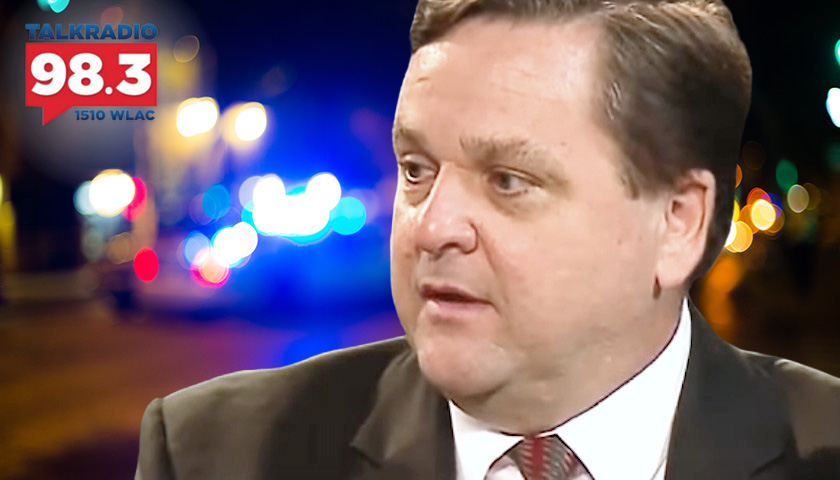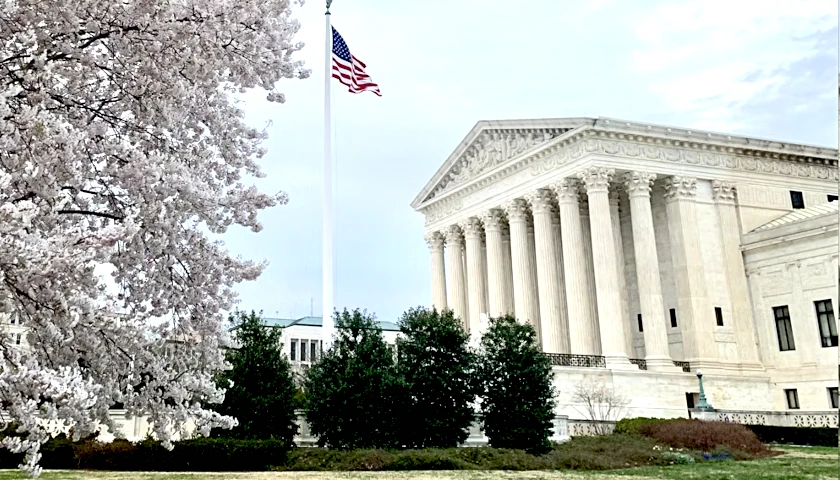Live from Music Row, Monday morning on The Tennessee Star Report with Michael Patrick Leahy – broadcast on Nashville’s Talk Radio 98.3 and 1510 WLAC weekdays from 5:00 a.m. to 8:00 a.m. – host Leahy welcomed the CEO of the Tennessee Firearms Association, John Harris in studio to discuss his recent article which poses a hypothetical case of justifiable self-defense in relation to the death of Tyre Nichols in Memphis.
Leahy: In studio, our very good friend for many years, the CEO and founder of the Tennessee Firearms Association, the leading Second Amendment group in Tennessee, and I would say in the country, also an accomplished attorney of Vanderbilt Law School graduate Mr. John Harris. John, you were talking about the hypothetical case you wrote about on the Tennessee Firearms Association website and its reception. Tell us about what the hypothetical case was, what question you posed in that article, and what the reaction has been.
Harris: Sure. The article really went on a different angle from most of the news reporting, and it looked at the issue of Tennessee having a statute on the justifiable use of force, and self-defense. Most people will speak in terms of having a right to self-defense.
And so this statute sort of outlines, based upon how the legislature sees it, what justifiable self-defense is, which includes the use of deadly force. And part of what the article does is it looks at that standard. And what we typically hear, what I teach in classes when I go teach, is that there must be an imminent fear of death or serious bodily injury.
And I think if you look at the videos, Nichols, there’s enough evidence where I think any jury would find that Nichols had imminent fear of death or serious bodily injury at some point.
Leahy: The 29-year-old young man who was beaten so severely by five Memphis police officers in this Scorpion unit on January 7th, that he died on January 10th.
Harris: And then what the story does is it looks at a provision of our self-defense statute, which is 30.911,611, that has to do with when is it permissible under state law for someone to use deadly force against a law enforcement officer. And it sort of struck me as odd.
And I’ve not found any cases that really talk about this statute in this context. But there is a provision, and it’s been on the book since at least 1989, that says if an officer is using more force, than reasonably necessary to in effect an arrest, a stop, detention, or even a roadblock, it may give rise to a situation where civilian use of deadly force would be justified. And if you look at the videos and we don’t know anything else at this point, about why this assault occurred while the level of aggression was taking place.
Leahy: And the video cam from the police begins with the officer approaching his stopped vehicle at an intersection, reaching in, grabbing him, and throwing him to the ground. It starts on a one to 10 scale of escalation. It starts at level 10 and gets worse and gets worse, much worse. So there’s no de-escalation at all.
Harris: The article looks at say, okay, what would have happened if Nichols let’s just assume that he reached up and he was able to get one of the handguns from one of the officers? What if he’d come in possession of the handgun once that level of assault and attack on him had arisen and had he tried to use it?
The law may well have said that he would have been justified in using deadly force at that point in time to stop or revert the assault on him if it was an illegal assault by law enforcement. The practical fact is taking it one step further, had he done that, he probably would have just been executed on the spot.
Leahy: Yes, that’s what it looks like. Speaking of the word execution. To me, this looks like a planned execution or a planned beating by these police officers of this young man. That’s what it looks like to me.
Harris: If you compare this video to maybe some videos that you see from security cameras, traffic cameras and whatnot of just gang assaults, it doesn’t really look that different, except there are blue lights.
Leahy: It looks like a gang assault.
Harris: It does.
Leahy: And again, all of this evidence will come out. But what we know is that they were part of the Scorpion Unit, these five officers, according to the Institute for Public Research Journalism out of the University of Memphis. And this was a unit that was established by Mayor Jim Strickland, a Democrat down there, and the chief of police, Cerelyn Davis who had just only been there a couple of months.
She’s a black woman who had served in that role in Durham, North Carolina. A couple of months after she was there, they set up this unit. And it looks like there is virtually no supervision of these guys. 40 members out of a 2,000-member police department. They were charged with, you know, cutting down crime in poverty-stricken areas for the most part.
But it looks like their pattern of behavior was to beat up people and violate their rights. There are multiple incidents that have been described. The unit was disbanded.
Let me ask you a legal question on this. It’s hypothetical, but I’ve been thinking about it. They’ve been charged with second-degree murder. If it’s proven that they laid in wait to target this young man and beat him, is this a second-degree murder or first-degree murder?
Harris: If there was premeditation, those charges can easily be amended to a higher first-degree murder charge.
Leahy: Now let’s go even further. If they were members of a rogue, officially authorized unit where they were not trained properly or they were not supervised properly, and if, as it’s the case, it looks like this Scorpion Unit basically was out there committing crimes under the color of law, that’s what it looks like to me, my question to you, John Harris, would the chief of police and the mayor be subject to any legal charges?
Harris: If there’s a federal civil rights case brought, they’re going to be named parties. I would anticipate that without a doubt. The real question is going to be if there’s a federal criminal civil rights investigation on whether or not or to what extent those supervisors could be brought in and charged with one or more crimes that they intentionally facilitated.
The creation of a task force that was not properly orchestrated or trained, or worse yet, that they were given instructions on how to act to suppress violence. You look at it, you take these five officers, and what you saw on some of those videos didn’t look that different than some of the movies and reports you heard in the south after the Civil War of guys riding in on horses with white robes. They were there to inflict physical injury.
Listen to today’s show highlights, including this interview:
– – –
Tune in weekdays from 5:00 – 8:00 a.m. to The Tennessee Star Report with Michael Patrick Leahy on Talk Radio 98.3 FM WLAC 1510. Listen online at iHeart Radio.
Photo “John Harris” by NewsChannel 5. Background Photo “Police” by Johnny Silvercloud. CC BY-SA 2.0.





